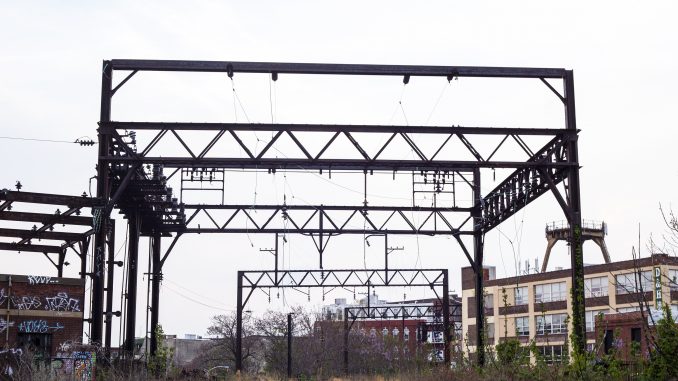
The Center City District and Friends of the Rail Park plan to start construction on a proposed multi-use park and walkway this summer in Callowhill, also known as “The Loft District.”
Tracks owned by SEPTA and the existing Reading Viaduct are being imagined for an elevated park, like New York City’s High Line.
The SEPTA-owned track, which starts on Noble Street between Broad and 13th streets at street level, rises and meets up with the Reading-owned track. The total length of the park would run about one mile on the city’s east side and four-tracks width at its widest.
“We’re looking at a plan that could be a very interesting piece of the Philadelphia skyline,” said Byron Comati, director of strategic planning for SEPTA. He added that it would be an opportunity to “rejuvenate the lost district” of the neighborhood, which doesn’t get as much attention as the neighbor districts to the south, Chinatown and Center City.
The plan is coming to fruition by a new partnership of the William Penn and Knight foundations, called “Re-imagining the Civic Commons,” which has the goal to bring more green space to neighborhoods throughout the city, according to philly.com.
Friends of the Rail Park is a nonprofit organization that advocates for the three-mile linear park and recreation path consisting of the Reading Viaduct and City Branch, an underground tunnel previously used for carrying freight under the city.
The underground portion of the rail park, which runs from the east side of Broad Street through the Fairmount neighborhood and up toward the Philadelphia Museum of Art, is still under inspection by the Delaware Valley Regional Planning Commission before the space can be considered for recreational or transit use.
Comati said that while the organization has owned their portion of the above-ground track since 1994, no plans for its use have presented themselves until now.
Because of the age and material of the tracks, construction will need to focus on stabilizing the railbed underneath and maintaining the existing structure before building on to it.
Comati said that depending on the design and the materials used to carry out the design, he estimates construction to last at least eight to 10 months. The goal is for the park to have some longevity, he said.
“In order to make this a recreational opportunity we are going to have to maintain the integrity of the structure,” he said. “We can create something that is contextually correct.”
While the elevated park compares to New York City’s High Line, Philadelphia’s park will be wider and higher off the ground, offering more opportunity for multiple uses at one time, Comati said.
Paige Gross can be reached at paige.gross1@temple.edu or on Twitter @By_paigegross.



Be the first to comment